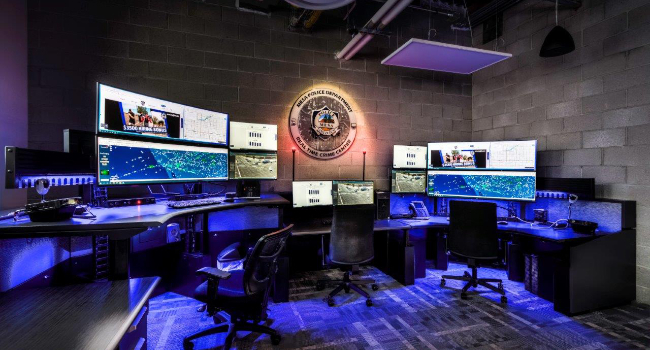
Arizona Police Department Launches Real-Time Crime Center
Genetec Inc., technology provider of unified security, public safety, operations, and business intelligence solutions, announced that the Mesa, Arizona Police Department (MPD) has launched a state-of-the-art real-time crime center (RTCC) based on Genetec Security Center, Genetec Citigraf, and Genetec Clearance. Within the first 12 months of the opening of the RTCC, the MPD solved more than 930 felony and 640 misdemeanor cases and recovered over 268 stolen vehicles while expediting their emergency response, improving situational awareness, and building collaboration in the community of its 550,000 residents.
To take a proactive, innovative approach to policing, the city had invested in many technologies over the years -- all operating independently, so data and departments were siloed. MPD Lieutenant Ryan Stokes said, “We wanted to bring all of this data together, to make it easier for our operators to gather and share real-time information with responding officers. With critical incidents, having situational awareness 30 to 90 seconds before arriving on the scene is a huge advantage.”
After touring RTCCs across the U.S. the MPD made the decision to launch their own, adding the Genetec Citigraf strategic decision support system and Genetec Clearance digital evidence management system to their existing Genetec Security Center unified platform.
Today, the Mesa RTCC is a 3,000-square-foot public safety command center equipped with massive video walls and advanced technology. Genetec Citigraf acts as the main visualization dashboard for emergency response and investigations. It brings together 800 city cameras, 180 traffic cameras, eight mobile Police Observation Devices (PODs), real-time AVL data, live 911 calls, real-time drone video, and other key technologies. Soon, the system will include more transportation cameras, data from the MPD's records management system (RMS) system, a downlink for helicopter video footage, and on-demand community cameras from participating businesses and schools. Operators can also access ALPR and video analytics systems within separate applications, though plans are underway to connect all that data within Citigraf.
Using Citigraf, operators take real-time response to the next level. Beyond seeing all cameras, patrol cars, and emerging events on a city map, they can quickly address emergencies and extend critical information to patrol officers.
When they’re not responding to emergencies, the MPD uses its RTCC to speed investigations, mining historical data in Citigraf to retrieve evidence and using the Clearance Camera Registry feature to speed up canvassing from businesses and residents. Those who participate register their cameras as part of the Mesa Community Connect program. RTCC operators can then locate their cameras on a map and quickly request video recordings via email, which are shared back to the MPD via a secure web portal. The program now has over 150 participants, and the city is working now to bring more than 5,000 cameras from Mesa Public Schools into the system.
“Citigraf has changed the way we do policing,” Stokes said. “Genetec has been a solid partner during this whole project. We’re really excited about the future of our RTCC operations. We have the foundation and the support. Now we’re going to build on that to make our city even safer.”